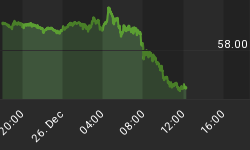This morning, I did some research on the relationship between the NYSE Margin Debt levels and the end of Bull markets.
If you think about it, Bull markets end with greed and exuberance at an extreme ... and coinciding with the greed and exuberance would be the inclination to borrow more in order to fulfill the perception of making more on the underlying amount invested.
If that makes logical sense, then you would expect the NYSE Margin Debt to rise and up trend higher as the Bull market rises. And then ... a pull back on Margin Debt would coincide with a pull back in the stock market. We won't delve into the possible reasons for a pull back in Margin Debt other than to say it could be because of a change in margin requirements, an out of control over-exuberance that scares the Fed, or a myriad of other reasons which could include an "event crisis" that unsettles and scares market participants.
In any case, let's just look at monthly data and trending of the NYSE's Margin Debt from 1997 to February 2014 which is shown on the top part of the graph.
If you look at that part of the graph, the red line depicts the actual amount of margin debt incurred as of the end of each running month. (The blue line is an eight month, moving average that is weighted which makes it easier to observe the up and down trending.)
The first observation one could make is that the margin debt levels are now on a fast upward trending trajectory which was getting very close to resistance at the end of February. (February was the last NYSE data available.)
The second observation one could make, is that the NYSE Index couldn't make it as high as the previous rise, even with more money (margin debt). From a longer term perspective, this is an unhealthy condition. (Do remember that this data is monthly data and it is therefore not reflective of the short term action in the market.)
The conclusion one could draw from the Margin Debt levels is that he Bull market is definitely closer to the end rather than the beginning.
Now, let's look at the bottom graph which shows a 21 month setting on a Stochastic RSI Indicator. During the past two Bull market peaks, the stock market peaked after the Stochastic RSI went negative (below 50) along with the Margin Debt starting to fall ... or when the Stochastic RSI was down trending and very close to going negative along with the Margin Debt peaking or pulling back.
Currently, the Stochastic RSI Indicator was not near a negative level at the end of February, nor was it down trending. Without the March data, we don't know if that changed last month, but as of the end of February, the market trending was still up for March. [Note: This chart and commentary may be reproduced and posted anywhere without permission and with an appropriate source reference.]

This next chart is a close up of the above chart in order to make viewing easier.

















